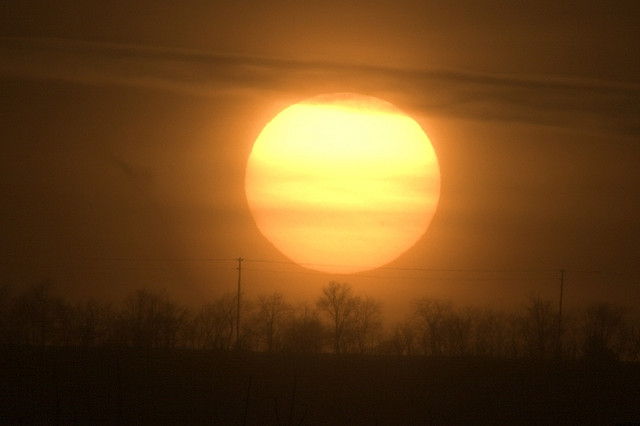Link #12: Sun Is the Largest Body in Our Solar System

The sun is a lot of things to the people on Earth. It’s the primary source of sustenance for us, as its light is crucial for plants to grow. It’s also important for the human body because it helps the production of vitamin D. But, more than anything else, the Sun is the center of our solar system in more ways than just position. For example, did you know that it’s not Earth or any of the other planets around us that is the biggest thing in our solar system, it’s the Sun?
How Is the Sun the Biggest Guy on the Block?

If you take the total mass of our solar system and the mass of the Sun, you’ll find that our darling star accounts for 99.8 percent of the mass in the whole solar system. Even if you set aside the mass, the Sun is ginormous. Its diameter is more than 109 times the diameter of Earth.
Having trouble imaging this? Consider this. The difference in size between the Sun and the Earth is such that you could fit a million Earths inside the Sun without batting an eyelid. The big question you may be itching to ask now is: if the Sun is so big, what has it fattened itself on?
What Is the Sun Made Of?

The Sun is basically a huge engine. It generates enormous amounts of energy every second. If you were to try to match the amount of energy produced by the Sun then you’d have to light 100 billion tons of dynamite every second, to even come close. You won’t even find so much dynamite on Earth or, for that matter, anywhere else in our solar system.
About 70 percent of the Sun is hydrogen, 28 percent helium, and the other 2 percent is miscellaneous metals. This means that the Sun is largely a huge ball of gas where chemical reactions occur every second.
What Happens in the Sun?

You now know that the Sun is a huge engine. The main fuel that this cosmic engine uses is hydrogen. What the Sun does is take two atoms of hydrogen and fuse them together, through a process known as nuclear fusion. The result of this process is helium, which is the other major element in the Sun.
When hydrogen atoms are fused and helium is produced, there is also a release of massive amounts of energy. As this energy moves toward the surface of the Sun, it’s absorbed and released, again and again, with lower intensity. The result is that by the time it comes out of the Sun, it is largely light and heat.
This energy is what you feel as heat when you step into the daylight. You feel it even though the Sun is 93 million miles (150 million kilometers) away from Earth. That’s far enough that light from the Sun takes more than 8 minutes to reach Earth.
Can you Guess the Next Link in the Chain?
What will be the next link in our Chain of Facts? Think you might know? Scroll down to add a comment below with your best guess.
You can view the full list of links in the chain here.
Sources:
http://nineplanets.org/sol.html
http://www.bbc.co.uk/science/space/solarsystem/sun_and_planets/sun
http://amazing-space.stsci.edu/resources/myths/solar_system.php.p=Capture+the+cosmos@,capture,%3ESolar+system@,capture,solarsyst
http://www.space.com/58-the-sun-formation-facts-and-characteristics.html









